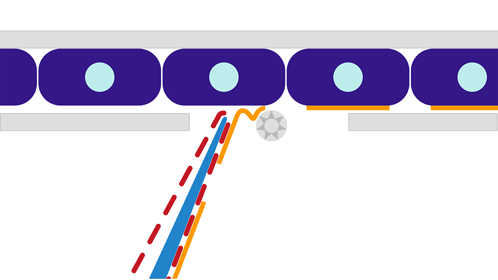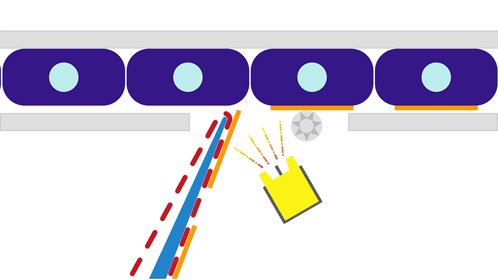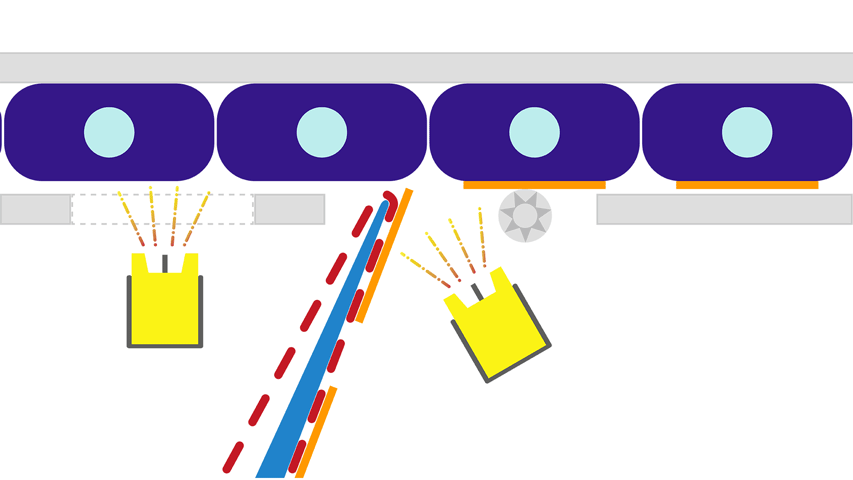Labels can become electrostatically charged during the labelling process. This can result, for example, in the label being incorrectly positioned, wrinkles appearing in the label or the label wrapping around a pressure roller. By using ionisers, electrostatic charging can be sufficiently reduced.den.
Labelling process without the use of ionisers at the dispensing edge:

Labelling process with the use of ionisers at the dispensing edge:

In the following we explain where and when electrostatic charge can occur.
Electrostatic charge during the labelling process
Electrostatic charging can occur during the labelling of self-adhesive labels. During the dispensing process, the self-adhesive label is peeled off the silicone-coated backing sheet at the dispensing edge. A massive separation process takes place between two surfaces, creating electrostatics. The two separating materials that are separated from each other during labelling are the adhesive film of the label and a silicone layer of the liner. Both materials can become highly electrostatically charged.
The electrostatic charge causes the label to adhere too quickly to the product to be labelled or to be repelled by it. This can result in an incorrectly positioned label or wrinkles in the applied label.
Electrostatic charge during label unwinding
Electrostatic charging can already occur when the label web is being unwound. This means there is a risk that the label web will stick somewhere on the system or on the products. This can happen in particular in places where the label web is not forced to run.
Dust magnet as a result of electrostatic charge
The electrical charge can turn the label into a "dust magnet". The result is small elevations in the label caused by the finest dust particles. This is particularly problematic in hygiene productions. Pharmaceutical products such as vials or tubes would probably be classified as "non-recyclable" and sorted out. The electrostatic charge varies depending on the product surface. Plastic containers, in particular, become electrostatically charged.
Ionisers as a solution to static electricity
ionisers on the label roll
During the labeling process, the label roll is continuously reduced. In order to keep the shrinking label roll always discharged, certain distances between the ionizer and the charged surface are recommended. With increasing distances, the risk of poorer discharge performance increases.

The illustration above shows various positions where an ionizing bar can be used successfully. Depending on the machine structure, one position is more or less suitable.
Ionisers at the dispensing edge
As already described in the section above, the biggest problems arise when the material carrier and label are separated at the dispensing edge. At the point where the electrostatic charge is created, it must also be removed. The ionizing bar must therefore be attached in such a way that its stray field reaches the dispensing edge and thus prevents the electrical charge. A small modification may have to be made here.

Ionisers in the labeling of plastic containers
In order to discharge the surface to be labeled on plastic containers, an ionizing bar can be attached directly before the actual labeling process.

Whether an electrostatic charge occurs can be determined when setting up the system or during internal test runs. In order to then be able to ensure precise labeling accuracy, ionizing bars are required. The additional costs can be between €300 and €1,000. Please note that this cannot be taken into account at the time the offer is made. If ionisers are required, the additional costs will be passed on to our customers.

